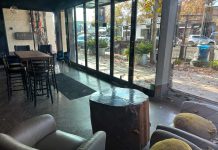Plan to help low-income in the community leaves some concerned
about health care, social services
Morgan Hill – An innovative approach to building low-income and affordable housing in Coyote Valley is pleasing community service advocates, but the advocates are worried that the area’s specific plan is missing critical details – healthcare and social services.
“There are no specific plans for any funding [for healthcare] for Coyote Valley,” said Phaedra Ellis-Lamkins of the South Bay Labor Council. “[Without that] people will be less likely to have the services they need to keep their families healthy. We want it to be somewhere they can not only afford to live, but thrive.”
As San Jose moves forward with a plan to fill Coyote Valley with 25,000 homes, 50,000 jobs and 80,000 residents, it’s also trying to figure out how to meet one of the plan’s toughest obstacles, making the area affordable for the scores of moderate and low-income people who will live there.
That means providing housing for 15,000 people with annual incomes of $40,000 or less, and those trying to support families of four on less than $60,000 a year. And it means providing services for scores of people without health insurance in an area with no existing services providers.
“It will most certainly impact our agency and the services we provide,” said Lisa DeSilva, development director of Community Solutions, in Morgan Hill. “Obviously, that’s the target population of who we serve in many of our programs. It really is a basic math equation. We either need to raise the revenue we’re able to bring in to support those services or we’ll end up with an increased level of unmet need.”
But at this point, the specific plan doesn’t include any land for clinics, and the city of San Jose has no official relationship with Community Solutions, one of the largest nonprofit operators in south San Jose.
“The interesting thing with Coyote Valley development is that it is really our community, but it’s the city of San Jose,” DeSilva said. “All of us are doing more with less. At this time, in this very preliminary stage, we don’t have the luxury of staff time or resources.”
Ellis-Lamkins, who is a member of the Coyote Valley Specific Plan task force, wants San Jose and developers to provide for two health clinics in San Jose, which she said would match the city’s current ratio of health services by population.
Those clinics, about $30 million each, would be funded by a fee assessed to property developers. Williams said the developers are open to providing some land and seed money, but suggested Ellis-Lamkins is overstating the need.
“We want to make sure the strategy is to serve the entire community,” Williams said, adding that one clinic may be enough for the area. “They don’t necessarily need $30 million. There are other sources of money they can compete for, and if they have seed money they can compete better.”
Ellis-Lamkins said she is interested in pursuing private-public partnerships and exploring a variety of service options that include offering more services at the mostly-closed DePaul Health Center. A new county health clinic scheduled to open in Gilroy next year also may address needs in Coyote Valley.
Ellis-Lamkins is also concerned that the Coyote Valley plan doesn’t adequately address housing for people known as extremely-low income earners, meaning they bring home just 30 percent or less of the area’s median income. That’s $22,000 for a family of four in South Valley. She said Coyote Valley will be full of service and retail workers who won’t be able to afford the region’s high rental prices.
“We want to make sure there is funding for extremely low income folks in the rental market in addition to inclusionary housing for sale units,” she said. “There is going to be an incredible need for people making those wages.”
At this point, there is no plan to provide housing for those wage earners, but developers and social service providers have come up with a plan to build rental housing for people considered low and very-low income earners.
The Coyote Valley Specific Plan requires 20 percent of the housing to be affordable, an idea inspired by the city’s redevelopment laws. But Coyote Valley is not a redevelopment project, meaning developers can be much more flexible in how they build affordable housing.
The current plan is to set aside segments of land, perhaps as much as 100 acres, and dedicate them to 4,000 low-income rental units rather than relying on home builders to sprinkle the units in their other projects. Chris Block, executive director of Charities Housing in San Jose, said that scheme would ensure the housing gets built.
“If you don’t have a dedicated land strategy it’s almost impossible, in my mind, to imagine a scenario where you get low-income housing in a great number,” Block said. “Scattering units in a development makes it very hard to get public financing.”
If the dedicated land strategy is adopted, low-income housing areas would become part of Coyote Valley’s infrastructure development, akin to parks and schools. The financial details have not been worked out, but for-profit developers may pay into a fund to build the housing.
Williams said developers support the plan because it meets the goals of Coyote Valley development and takes the burden of building low-income rental properties off the backs of homebuilders.
“Why not let the experts do it?” she said of non profit builders like Block. “This is more cost-effective. We’re committed to the goals of this plan and we think this is the best way of doing it.














